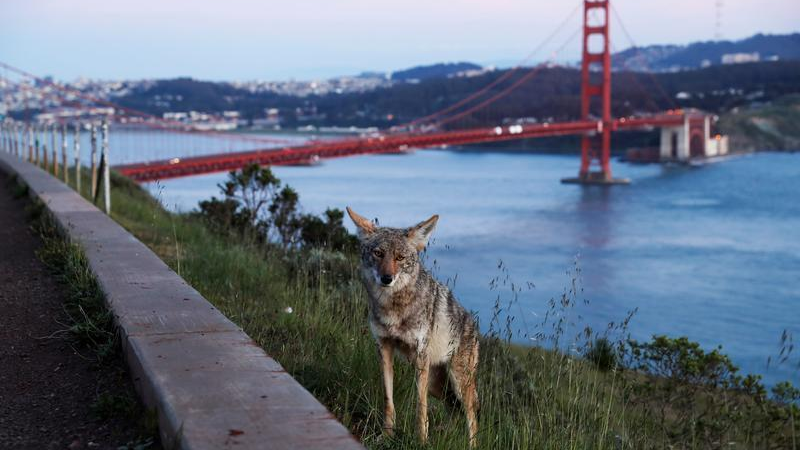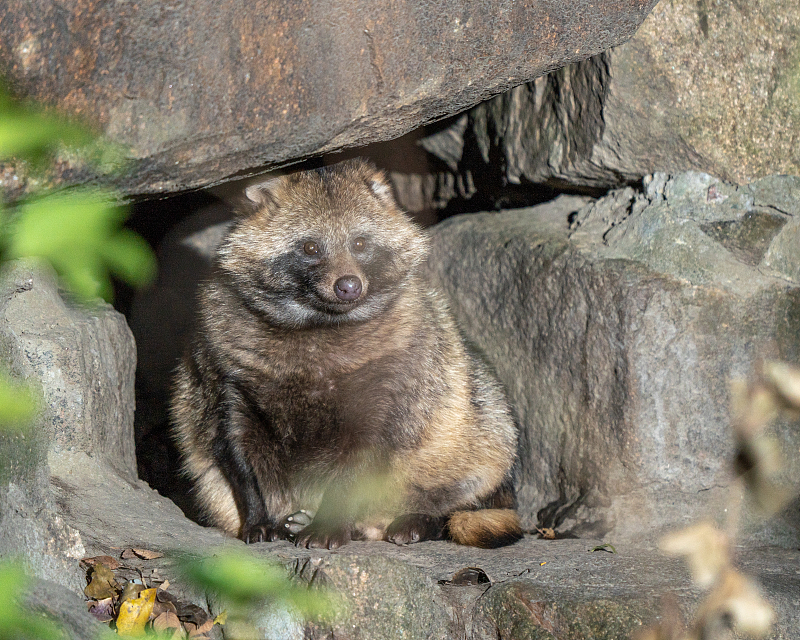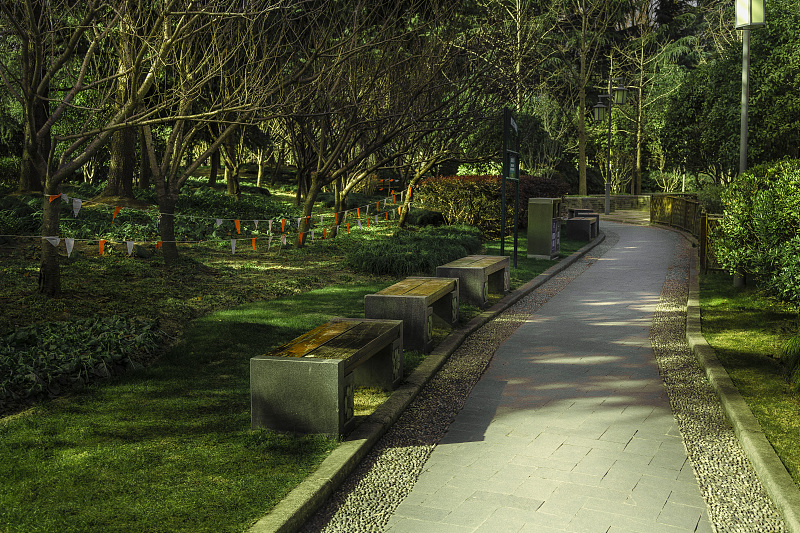Shanghai residents recently spotted a bunch of curious dog-like animals hanging around their neighborhoods. The experts confirmed them as raccoon dogs, or “貉” (hé) in Chinese. Most Chinese have heard of the animal from the phrase “一丘之貉” (yī qiū zhī hé), which could be literally translated to “raccoon dogs of the same hill,” meaning “birds of a feather”. But few actually knew what the animal looked like until recently.
The unexpected guests took residence in the city’s parks and neighborhoods. After the initial amusement of seeing these peculiar creatures, people soon realized that their daily lives are now being intruded on. A resident from one infested neighborhood complained about the nocturnal scavengers. “I have to be extra careful when taking the garbage out, with my phone’s flashlight on. It’s scary, they just dashed out of the bush, at least 20 or 30 of them, their eyes are like little light bulbs,” the resident said. Another recalled, “One day, a mother raccoon dog with eight pups just blocked the whole street, and my mom got scared. They have severely affected our lives.”

Across the Pacific, a similar phenomenon is taking place. In the United States, coyotes have been moving into metropolitan areas. They are just as versatile as raccoon dogs, if not more, and have successfully carved out territory for themselves in urban areas. They’ve found easier access to water and food as the wild is gradually becoming unlivable, given accelerating changes in the climate.
But city dwellers are not happy with their arrival. Coyotes have a diverse diet, and sometimes smaller pet dogs and cats fall prey to these natural predators. Cases of them attacking humans have also occurred. In San Francisco, locals have voiced their concerns about the disturbance caused by the coyotes and have requested government help in removing them.
A coyote stands by the roadside at Golden Gate Bridge View Vista Point across from San Francisco, California, U.S. /Reuters
Where did these animals come from and why are they moving to the cities?
In fact, raccoon dogs are not actually intruders; they are natives of the Yangtze River Delta. This exotic member of the canid family was an ancient species that has lived throughout China. The phrase “yī qiū zhī hé” originated in the Han dynasty (202BC-220AD), meaning the animal was familiar to the Chinese people over 2,000 years ago.
Coyotes are native to the North American continent. The name “Coyote” is of Aztec origin and has a history of at least 1,000 years. Before the colonial era, coyotes lived in the southwest of North America. Since the 19th century, their range began to expand north and east due to the westward expansion of American settlers.
Rapid urbanization around the world particularly since the Industrial Revolution has led unavoidably to the loss of natural habitats. Countless animals have been forced out of their homes, and their numbers greatly reduced. As a result, animals that were once common such as raccoon dogs gradually became strangers.
The extreme weather caused by climate change has played a factor in the raccoon dogs recolonizing cities over the past years. According to the Center for Agriculture and Bioscience International, the harshness of winter can heavily influence the productivity of their population. Raccoon dogs hibernate during winter, and the females start to ovulate and mate in early spring. The longer the winter, the later mating occurs, and the later the pups are born, shortening the time for them to grow and reserve fat before the next winter. Just this past January, Shanghai experienced its coldest winter in 35 years. This helps to explain the raccoon dogs’ move to the city, where temperatures are higher than nearby rural areas.
A raccoon dog in its new shelter in a residential area in Shanghai, east China /VCG
In the 1930s, the United States Congress gave $10 million to the Eradication Methods Laboratory to wipe out coyotes in America. Between 1947 and 1956, around 6.5 million coyotes were killed by poisoned bait. Surprisingly, the coyotes survived under the eradication campaign. To overcome persecution, coyotes have evolved to develop fission-fusion adaptation, which allows them to survive both in packs and in singles. Therefore, they gave up staying in packs, and split off to live individually or in pairs, making them harder to track. As a result, their population scattered all across North America. Today, they are still massively hunted in the United States. At least 400,000 coyotes are slaughtered each year, around 80,000 by the government. The reason for relentlessly killing these predators, as claimed, is to protect livestock. In search of new homes, coyotes found urban areas to be safe havens. There is no concern of being trapped, poisoned or shot in the cities.

Green space in Shanghai, east China /VCG
The increasing green space coverage in urban areas is also attracting shelter-seeking animals. Habitats such as forests and wetlands are being restored in urban parks and residential communities and many cities are on their way to becoming more eco-friendly as the climate crisis has raised awareness over the world on the importance of environmental protection.
Compared to the last century, urban areas nowadays are becoming better environments for both humans and animals to co-exist. For raccoon dogs, cities provide an abundant source of food from bushes and garbage and carry no threat of predators; they are flexible in choosing their shelters, which range from fallen trees to cracks in walls to abandoned sewers. Similar to coyotes, raccoon dogs can also adjust according to the environment. These resilient animals are able to alter their usual habits under strange or harsh circumstances to ensure survival. Originally timid and cautious, they are becoming bolder as they casually wander across residential communities in hordes, eating from the garbage or even cat and dog food. With this terrific ability to adapt, they are on a path of evolution that would not have been possible in the wild.
The rising phenomenon of urban animals is just one link on the great chain of reactions caused by climate change. The thought that exterminating all the urban wildlife will solve the problem once and for all is a vain hope. Human beings are part of the ecosystem, not above it. Raccoon dogs are not the first urban wildlife to appear among us, nor will they be the last. The coexistence of humans and animals is on the way to become a big part of urban living. Apparently, raccoon dogs and coyotes have quickly adapted to the new urban life, and now it is our turn to figure out how to live with them.
Source: CGTN, 19-Aug-2021
https://news.cgtn.com/news/2021-08-19/Why-wildlife-is-seeking-shelters-in-cities–12QIruZWDqo/index.html